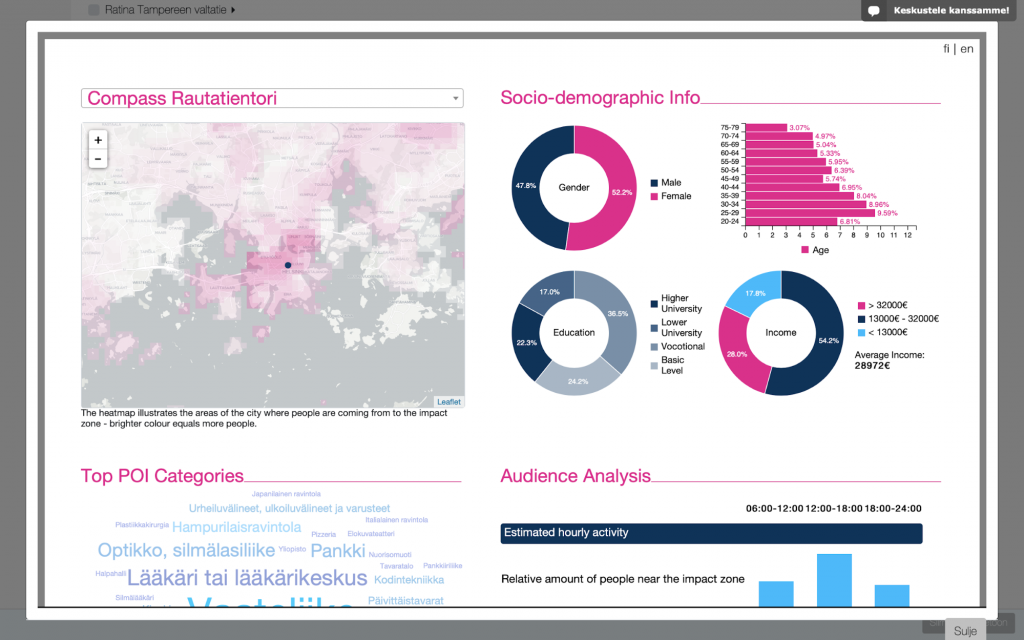Get invited to our slack community and get access to opportunities and data science insights

Audience data is a critical aspect of media planning and buying. For many years, digital advertising (online, mobile) has been using behavioural data in order to target the right audience, at the right time, in the right place – whereas out-of-home media and advertising has been lagging behind in data & analytics.
JCDecaux Finland has been leading the development of data and analytics solutions for out-of-home advertising and digital purchase channels along with it. Together with WhereOS, JCDecaux has launched a development project to create new data driven products and business models: “WhereOS is truly great value for money, and is helping us to speed up our development efforts for digital out-of-home advertising, especially in the area of audience data modelling”, says Xavier Jolas, Head of Data & Programmatic, JCDecaux Finland
Measuring the audience in the physical world and connecting data to digital sales channels
JCDecaux Finland confirms that out-of-home advertising is going through an unprecedented evolution with data and analytics, combining both real-time user analytics and demographic and behavioral data sets, enabling customers to target and buy the right audiences, at the right place, at the right time.
When we started this development project, we wanted to combine and visualize different audience data sources in one view, in order for our agency and direct advertising customers to plan their campaigns according to their audience targets needs.
There are plenty of ‘data management tools’ out-there used to e.g. collect and visualise data but we felt that we needed something ‘light’, easy to use and convenient for our purposes. After consideration, we decided to start a project with the WhereOS Team, as we felt this was suitable for our needs and also light enough to avoid a large roll-out project. One of the big advantage we also noticed was the possibility to create APIs on the fly, which seemed quite unique.

As a result, we now have a set of integrated data from different sources (Telia, Locomizer, Tilastokeskus, Fonecta), that can be used to better plan campaigns on hub or impact zone levels (set of hubs). The data is updated few times per year automatically and the visual part of the data is also automated, without any need to create visuals manually.
The value for JCDecaux using the WhereOS platform in the project, from data science & technology perspective was:
“WhereOS has helped me to automate data integration and fusion, and develop new APIs and data insight dashboards and applications faster to our customers. We have been using WhereOS to create ‘data stories’ internally in our organization to boost the awareness of data driven solutions, by telling stories of who our target advertising audience is: where they are and how they move”, says Juho Koro, BI & data engineer, JCDecaux
“The collaboration from WhereOS perspective was excellent”, says JP Partanen, CEO of WhereOS. “We followed our co-development approach, where initially our development team helped JCDecaux team to launch the first version of the product, and helped JCDecaux team gradually take over the responsibility for further development and maintenance.” After the pilot project JCDecaux team has been independently developing the features and data integrations within their own data science team.
WhereOS is a data innovation platform and service.
For teams and businesses who want to get more value out of data – WhereOS minimizes your effort and maximizes your results.
If you wish discuss with us, please contact us through support@eaglepeaks.com or call us +358 50 486 9257.
© WhereOS 2021 All rights reserved